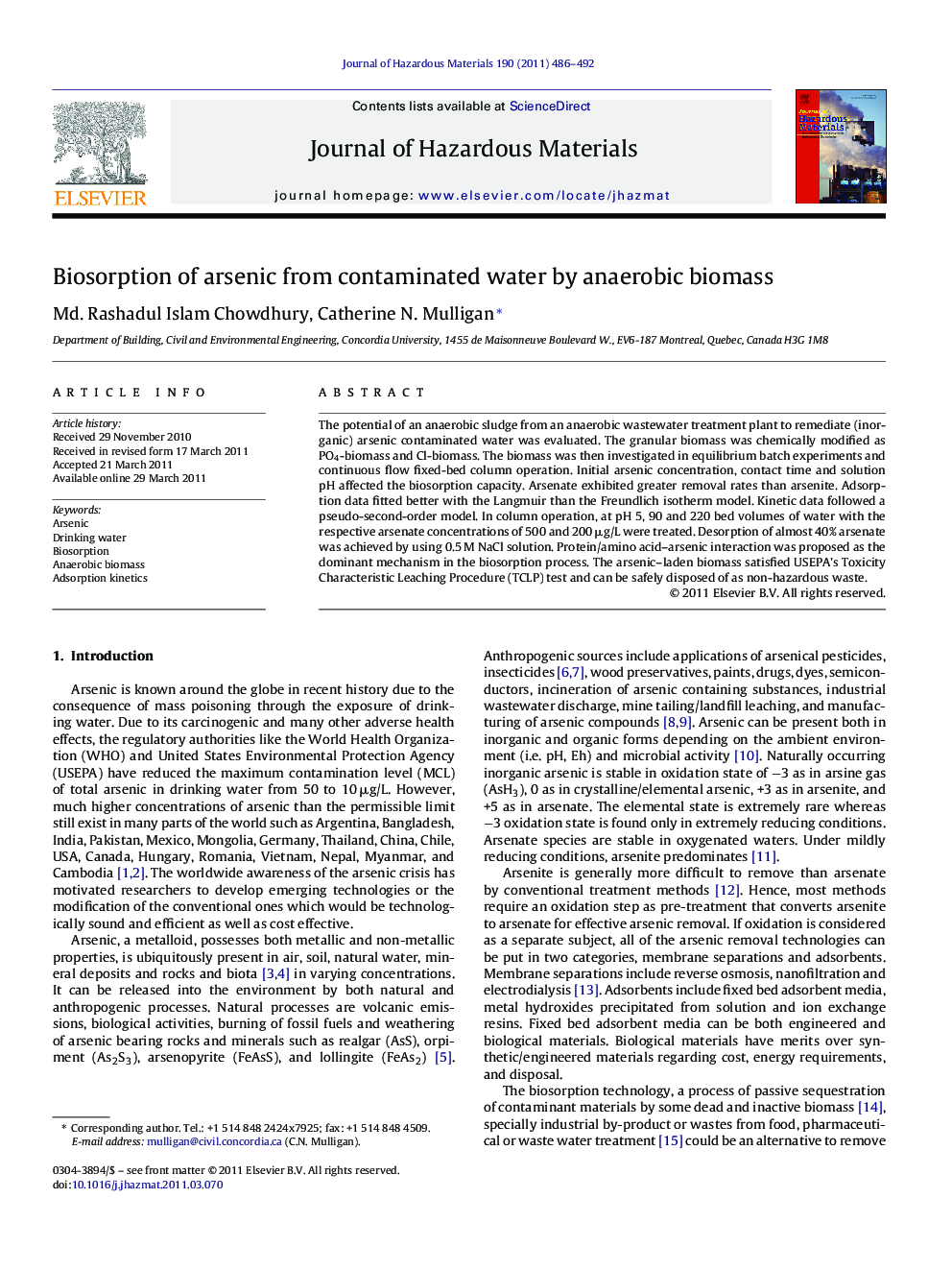| Article ID | Journal | Published Year | Pages | File Type |
|---|---|---|---|---|
| 578888 | Journal of Hazardous Materials | 2011 | 7 Pages |
Abstract
The potential of an anaerobic sludge from an anaerobic wastewater treatment plant to remediate (inorganic) arsenic contaminated water was evaluated. The granular biomass was chemically modified as PO4-biomass and Cl-biomass. The biomass was then investigated in equilibrium batch experiments and continuous flow fixed-bed column operation. Initial arsenic concentration, contact time and solution pH affected the biosorption capacity. Arsenate exhibited greater removal rates than arsenite. Adsorption data fitted better with the Langmuir than the Freundlich isotherm model. Kinetic data followed a pseudo-second-order model. In column operation, at pH 5, 90 and 220 bed volumes of water with the respective arsenate concentrations of 500 and 200 μg/L were treated. Desorption of almost 40% arsenate was achieved by using 0.5 M NaCl solution. Protein/amino acid-arsenic interaction was proposed as the dominant mechanism in the biosorption process. The arsenic-laden biomass satisfied USEPA's Toxicity Characteristic Leaching Procedure (TCLP) test and can be safely disposed of as non-hazardous waste.
Related Topics
Physical Sciences and Engineering
Chemical Engineering
Chemical Health and Safety
Authors
Md. Rashadul Islam Chowdhury, Catherine N. Mulligan,
